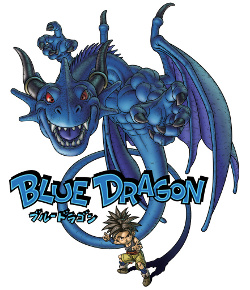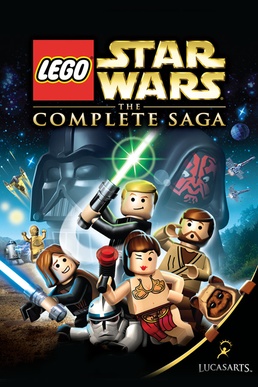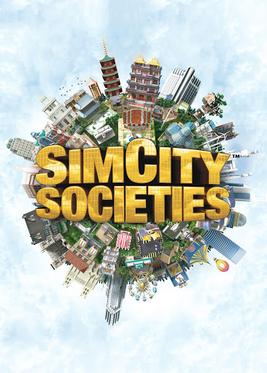
Soldier of Fortune is a first-person shooter video game developed by Raven Software and published by Activision in 2000 for Microsoft Windows. It was later released for the PlayStation 2, as well as the Dreamcast, while Loki Software also made a port for Linux. It was digitally re-released on GOG.com on October 2, 2018, along with its two successors. The player takes on the role of a U.S. mercenary as he trots around the globe hoping to halt a terrorist nuclear weapons plot.

Fly! is a flight simulator video game for Windows and Macintosh developed by Terminal Reality and published by Gathering of Developers.

The Urbz: Sims in the City is a video game for the Game Boy Advance, GameCube, PlayStation 2, Xbox, and Nintendo DS. It is the third Sims game for video game consoles and is the second Sims game not to be released on Microsoft Windows, after a planned PC port and sequel were both cancelled due to mediocre sales. The next release for consoles and handhelds was the console port of The Sims 2.

4x4 Evo is a video game developed by Terminal Reality for the Windows, Macintosh, Sega Dreamcast, and PlayStation 2 platforms. It is one of the first console games to have cross-platform online play where Dreamcast, Macintosh, and Windows versions of the game appear online at the same time. The game can use maps created by users to download onto a hard drive as well as a Dreamcast VMU. All versions of the game are similar in quality and gameplay although the online systems feature a mode to customize the players' own truck and use it online. The game is still online-capable on all systems except for PlayStation 2. This was Terminal Reality's only video game to be released for the Dreamcast.

CSI: Dark Motives is a computer game based on the CSI: Crime Scene Investigation television series. The game was developed by Radical Entertainment, published by Ubisoft, and was released for the PC in 2004. In November 2007 it was remade by Powerhead Games, published by Ubisoft and released for Nintendo DS. The Microsoft Xbox version of CSI: Crime Scene Investigation also contains the cases featured in this game.

Blue Dragon is a role-playing video game developed by Mistwalker and Artoon and published by Microsoft Game Studios for the Xbox 360. Blue Dragon is based on a design by Final Fantasy series creator Hironobu Sakaguchi, who also supervised development and wrote the plot. It is both Mistwalker's debut title and the first title to be helmed by Sakaguchi outside of Square Enix.

Crosswords DS is a puzzle video game developed by American studio Nuevo Retro games released by Nintendo for the Nintendo DS handheld video game console. It was previously released in Australia as CrossworDS but a new OFLC entry confirmed that Nintendo Australia re-released it with a European localization. Crosswords DS features over 1,000 crossword puzzles that the player solves by using the stylus. Despite the title, it also features word search puzzles and anagram puzzles. It makes use of similar handwriting mechanics that the Brain Age titles make use of. Crosswords DS is included in the Touch! Generations series of titles, which includes such popular games as Brain Age: Train Your Brain in Minutes a Day! and Nintendogs. The background music was composed by Fabian Del Priore.

The Settlers II, originally released as The Settlers II: Veni, Vidi, Vici, is a city-building game with real-time strategy elements, developed and published by Blue Byte Software. Released in Germany for DOS in April 1996, and in the United Kingdom and North America in August, it is the second game in The Settlers series, following The Settlers (1993). In December, Blue Byte released an expansion, The Settlers II Mission CD, featuring new single-player campaign missions, new maps for both single-player and multiplayer modes, and a map editor. In October 1997, they released The Settlers II: Gold Edition, containing the original game, plus the Mission CD expansion, along with minor graphical enhancements and gameplay tweaks. The Gold Edition was also ported to Mac OS in 1997. In 2006, an enhanced remake, The Settlers II , was released for Microsoft Windows. In 2007, the Gold Edition was ported to the Nintendo DS, under the title The Settlers, released in Germany in July, and in the United Kingdom and North America in August. Although adapted for the dual-screen display of the DS, and with controls specifically programmed for use with the DS stylus, the gameplay, game mechanics, graphics and storyline are unaltered. In 2009, the original Gold Edition was released on GOG.com, and in 2018, it was re-released for Microsoft Windows as The Settlers II: Veni, Vidi, Vici - History Edition.

Harvest Moon DS: Island of Happiness, known simply as Harvest Moon: Island of Happiness, and known in Japan as Bokujō Monogatari: Kimi to Sodatsu Shima, is a farm simulation video game published and developed by Marvelous Interactive Inc. in Japan, and released in North America by Natsume Inc. exclusively for the Nintendo DS. It is the third installment of the Story of Seasons series on the DS. It is the first entry without series creator Yasuhiro Wada involved.

SimCity DS is a city building and management video game and the first Nintendo DS installment in the SimCity series. It was published by Electronic Arts (EA) and developed by the AKI Corporation and EA Japan.

MySims is a video game developed by EA Redwood Shores and published by Electronic Arts as a spin-off to Maxis' The Sims franchise for the Wii and Nintendo DS in September 2007, re-released for Microsoft Windows and mobile phones in 2008, and for BlackBerry in 2009.

Deal or No Deal is a video game based upon the television show of the same name. It was released for Microsoft Windows, Game Boy Advance, Nintendo DS, Wii, iOS, and BlackBerry, and is available as a DVD TV game. There are two different versions available: a North American version and a United Kingdom version.

Lego Star Wars: The Complete Saga is a Lego-themed action-adventure video game based on the Lego Star Wars line of construction toys. It is a combination of the game Lego Star Wars: The Video Game (2005) and its sequel in 2006, which span the first six episodes of the Skywalker Saga. The game was announced by LucasArts on 25 May 2007 at Celebration IV and was released for the Xbox 360, PlayStation 3, Wii, and Nintendo DS on 6 November 2007 in North America. The game was later released on Microsoft Windows on 13 October 2009, macOS on 12 November 2010, iOS on 11 December 2013, and for Android on 1 January 2015. The game was a critical and commercial success.

SimCity Societies is a city-building simulation video game developed by Tilted Mill Entertainment and published by Electronic Arts, and is part of the SimCity series. The gameplay is significantly different from previous SimCity titles, with a greater focus on social development. SimCity Societies was released in 2007, and received mixed reviews, with praise for the game's improved accessibility and visuals, but criticism for being oversimplified and having poor performance.

Sid Meier's Civilization Revolution is a 4X, turn-based strategy game developed in 2008 by Firaxis Games with Sid Meier as designer. It is a spin-off of the Civilization series. The video game was released for the PlayStation 3, Xbox 360, Nintendo DS, Windows Phone, and iOS. A Wii version was originally expected but was cancelled. The absence of a PlayStation Portable version was attributed to a lack of development manpower.

Top Spin 2 is a 2006 tennis video game developed by Indie Built, MENT, and Aspyr and originally published by 2K and Superscape. It is the sequel to Top Spin and is followed by Top Spin 3.

Sonic Colors is a 2010 platform game published by Sega. It follows Sonic's quest to stop his nemesis Doctor Eggman from enslaving an alien race and taking over the world. The gameplay is similar to prior Sonic games, with players collecting rings and defeating enemies; the camera perspective often switches from third-person to side-scrolling perspectives. The game also introduces Wisps, power-ups the player can use to increase attack power and reach new areas.

The Settlers is a city-building and real-time strategy video game series created by Volker Wertich. The original game was released on the Amiga in 1993, with subsequent games released primarily on MS-DOS and Microsoft Windows: The Settlers II (1996), The Settlers III (1998), The Settlers IV (2001), The Settlers: Heritage of Kings (2004), The Settlers: Rise of an Empire (2007), and The Settlers 7: Paths to a Kingdom (2010). There are also several spin-offs; The Settlers II (2006) is a remake of The Settlers II, The Settlers DS (2007) is a port of The Settlers II for Nintendo DS, Die Siedler: Aufbruch der Kulturen (2008) is a German-only spiritual successor to 10th Anniversary, The Settlers HD (2009) is a handheld remake of The Settlers IV, and The Settlers Online (2010) is a free-to-play online browser game. With the exception of The Settlers HD, Ubisoft Blue Byte has developed every game in the series, as well as publishing the first three titles. From The Settlers IV onwards, Ubisoft has published all titles.

Le Mans 24 Hours is a video game released for the PlayStation, Game Boy Color, Dreamcast, PlayStation 2, and Microsoft Windows. The Dreamcast version was ported and published by Sega in Japan on 15 March 2001, while the PlayStation 2 version was ported and published by the same company on 13 June. Based on the famous 24 hours of Le Mans race in France, the player is invited to race the entire 24-hour endurance course or take part in a simpler arcade mode. The game also featured tracks such as Bugatti Circuit, Brno Circuit, Road Atlanta, Suzuka Circuit, Donington Park and Circuit de Catalunya, as well as a weather and night system.





















